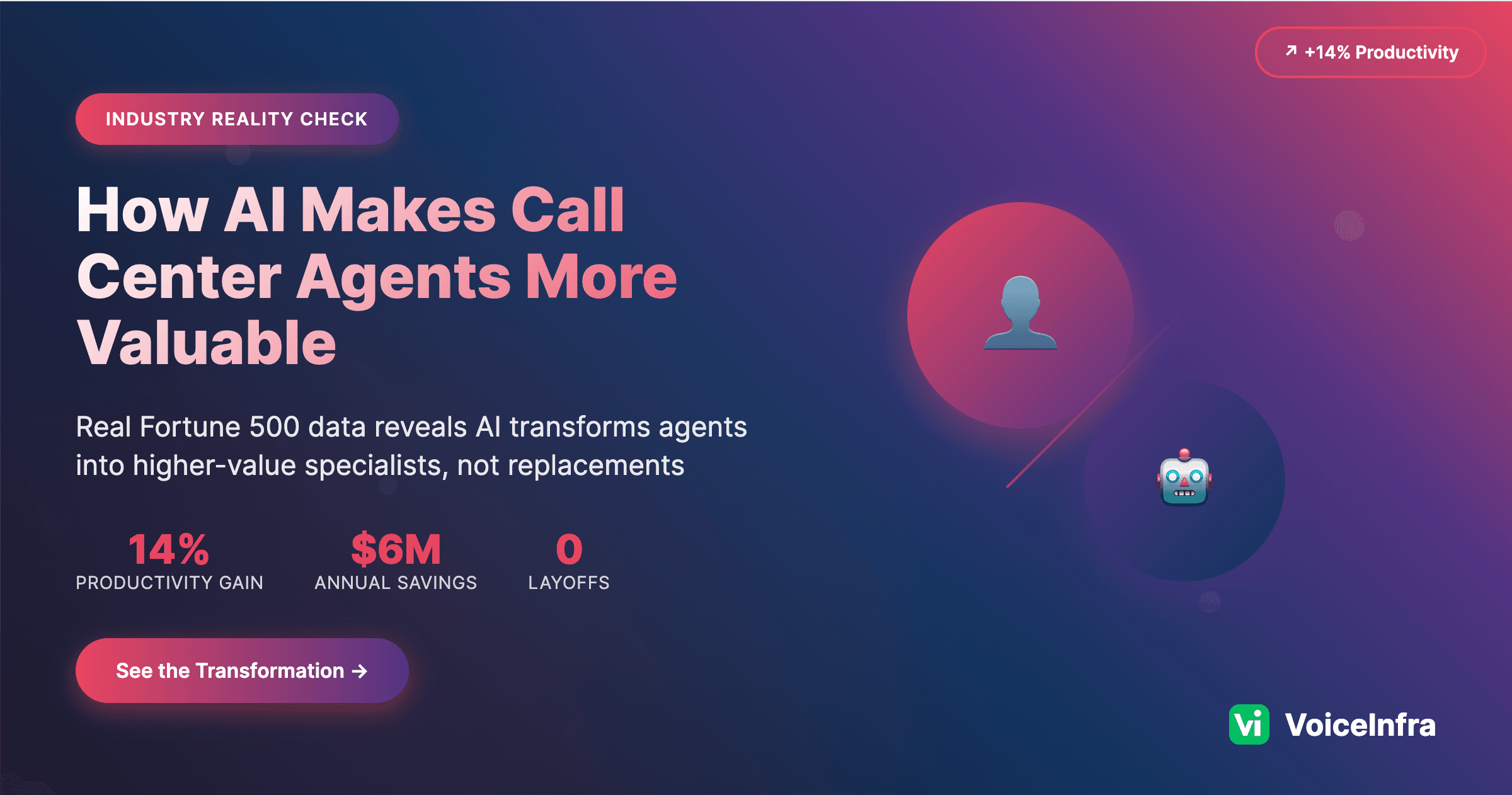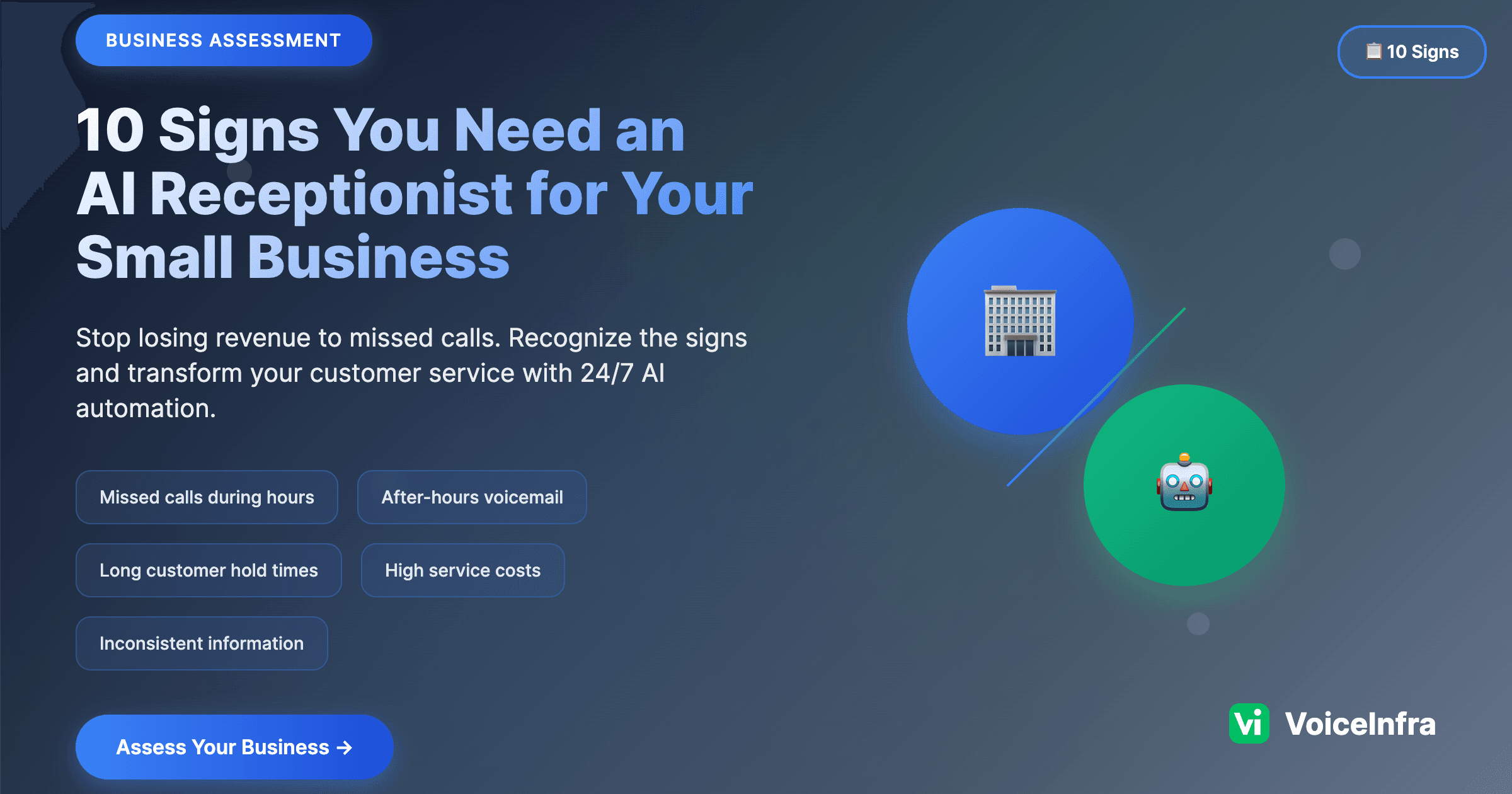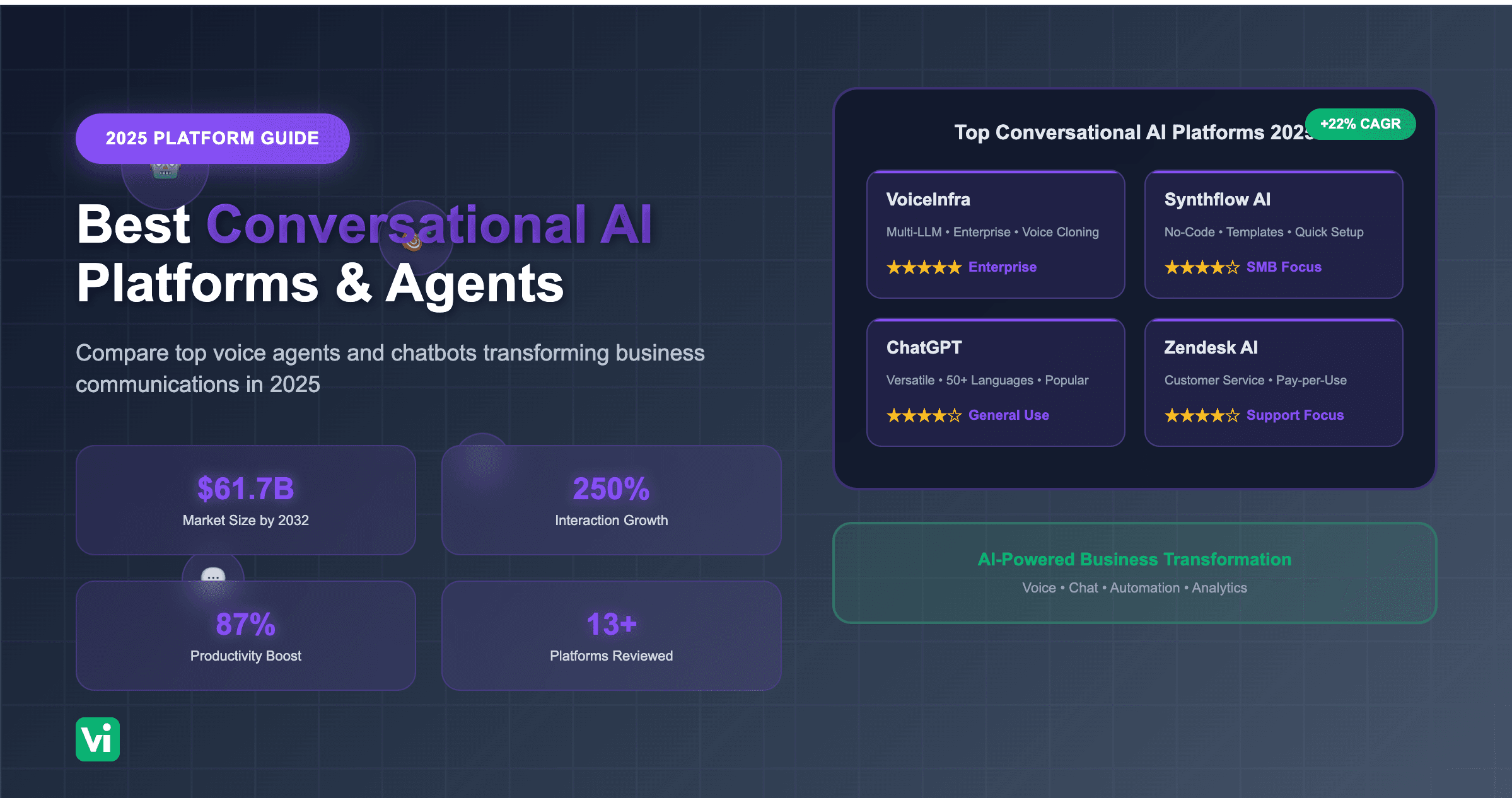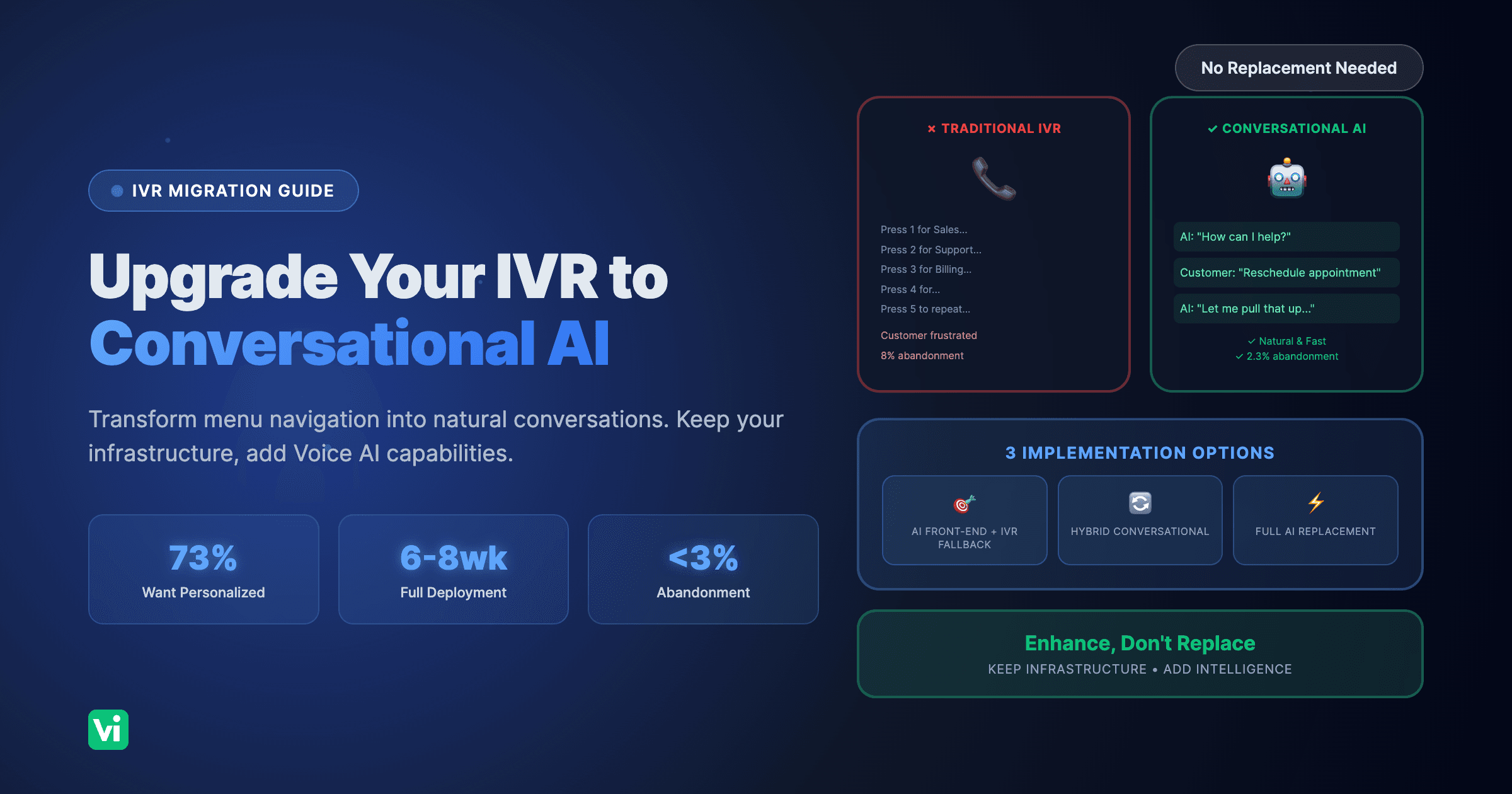The headlines are everywhere: “AI Will Replace Millions of Jobs.” “Call Centers Going Fully Automated.” “Human Agents Becoming Obsolete.”
But here’s what the sensational headlines miss: The reality on the ground is completely different.
After analyzing comprehensive industry research and examining real implementation data from Fortune 500 companies to small businesses, the truth about AI replacing call center agents is far more nuanced and surprisingly optimistic than the fear-mongering suggests.
The Bottom Line: AI isn’t replacing call center agents. It’s transforming them into something more valuable.
The Numbers Don’t Lie: What’s Really Happening
Market Reality Check
The AI Call Center Market is Exploding:
Growing from 2.41 billion in 2025 to 10.07 billion by 2032 (Fortune Business Insights)
That’s a 22.7% compound annual growth rate
Voice AI agents represented 22% of the most recent Y Combinator startup class (Andreessen Horowitz)
But Employment Tells a Different Story:
2.9 million customer service representative jobs currently exist (Coursera)
BLS projects only 1% decrease through 2033 (AARP Jobs Report)
Goldman Sachs reports employment decline due to “efficiency gains,” not mass layoffs (Goldman Sachs Workforce Report)
40% of the workforce needs reskilling, not replacement (IBM AI Upskilling Study)
The Productivity Paradox:
Companies using AI report a 14% productivity increase for human agents (NBER Study)
One enterprise saved $6 million annually with AI implementation (Teneo.ai Case Study)
10% operational cost reduction across implementations (Microsoft Cloud Success Stories)
But they’re not firing people; they’re making them more effective
What the Research Actually Shows
Stanford Study Results: Customer support agents using AI tools saw a nearly 14% increase in productivity (NBER Working Paper). The key finding? AI made human agents better at their jobs, not obsolete.
McKinsey’s $4.4 Trillion Opportunity: The consulting giant projects massive AI productivity gains (McKinsey AI Report 2025), but emphasizes “human-AI collaboration” rather than replacement across its research.
IBM’s Customer Satisfaction Data: Organizations optimizing AI-powered customer service reported 17% higher customer satisfaction (IBM Customer Service Future Report), but customers still prefer human agents for complex issues.
The Hybrid Model: Why It’s Winning
What Smart Companies Are Actually Doing
Tier 1: AI Handles the Routine (80% of calls)
“What are your hours?”
”Where are you located?”
”Can I reschedule my appointment?”
Basic troubleshooting and FAQ responses
Lead qualification and information capture
Tier 2: Humans Handle the Complex (20% of calls)
Emotional situations requiring empathy
Complex technical problem-solving
High-value sales negotiations
Complaint resolution requires creativity
Situations needing human judgment
The Result: Human agents become specialists, not generalists. They handle the work that actually requires human intelligence, while AI eliminates the repetitive tasks that burn out good employees.
Real Company Examples
Telefônica Brasil (Microsoft Case Study): Implemented Azure OpenAI Service to enhance their digital call center assistant. Result: Better customer experience and more satisfied human agents who focus on complex issues.
Bank of America (AI Workforce Report): AI adoption across their global workforce improved both productivity and client service through contact center optimization. They didn’t cut jobs; they enhanced them.
Enterprise Success Story (Teneo.ai): One company saved $6 million annually after implementing AI-powered call center solutions, but used the savings to invest in agent training and higher-value services.
The Skills That AI Can’t Touch
Why Human Agents Remain Irreplaceable
Emotional Intelligence: AI can detect sentiment, but it can’t truly understand the emotional nuance of a frustrated customer who just lost their job and can’t pay their bill. Human empathy builds the trust and loyalty that drives long-term customer value.
Creative Problem-Solving: When a customer has a unique situation that doesn’t fit standard procedures, human agents can think outside the box, bend rules appropriately, and create solutions that turn problems into opportunities.
Complex Reasoning: Multi-step problems requiring judgment calls, understanding context, and making decisions with incomplete information still require human intelligence.
Relationship Building: High-value customers want to build relationships with real people. The most profitable customer interactions often involve trust, rapport, and personal connection that AI simply cannot replicate.
The Evidence from Customer Preference Studies
ScienceDirect Research (Customer Service Study): Multiple studies show customers report higher satisfaction with human customer service compared to chatbots, especially for complex issues.
Trust Factor: Despite AI improvements, consumer trust remains higher for human agents when dealing with sensitive issues, complaints, or high-value transactions.
The Implementation Reality: Challenges and Barriers
Why Full Replacement Isn’t Happening
Technical Limitations:
Voice AI still struggles with complex queries
Latency issues when chaining multiple AI calls
Difficulty handling emotional nuance and context
Problems with accents, background noise, and unclear speech
Cost Barriers:
Implementation cost is the biggest AI adoption barrier
Small businesses show only a 28% AI adoption rate
Technical complexity requires ongoing management
Integration with existing systems is often problematic
Regulatory Compliance:
Data privacy concerns are increasingly complex
Call recording and compliance requirements
Industry-specific regulations (healthcare, finance)
Customer consent and transparency requirements
Small Business Reality
The Adoption Gap (Next Insurance Survey):
Only 28% of small businesses have adopted AI
9% use AI specifically for customer service
Cost and complexity remain primary barriers (Bipartisan Policy Center)
Most successful implementations start small and scale gradually
What This Means for Call Center Agents
The Transformation, Not Elimination
New Skills in Demand:
AI tool management and optimization
Data interpretation and analysis
Emotional intelligence and empathy
Complex problem-solving and creativity
Customer relationship management
Career Evolution:
From order-takers to problem-solvers
From script-followers to relationship-builders
From cost centers to profit centers
From replaceable to irreplaceable
The Upskilling Opportunity: Companies are investing in training programs to help agents work alongside AI tools. The World Economic Forum (Future of Jobs Report 2025) identifies customer service skills as among the fastest-growing job categories requiring human capabilities.
Real Agent Success Stories
Career Evolution in Action: Agents using AI assistance report higher job satisfaction and are being promoted to AI trainer roles, quality assurance positions, and customer success management. They’re becoming specialists in complex issue resolution and high-value customer management, roles that command higher salaries and better working conditions.
The Future: Collaboration, Not Competition
What 2025-2030 Looks Like
The Hybrid Workforce:
AI handles 70-80% of routine inquiries instantly
Human agents focus on 20-30% of complex, high-value interactions
Seamless handoffs between AI and humans with full context
Continuous learning loops where human insights improve AI performance
New Job Categories Emerging:
AI conversation designers
Human-AI workflow specialists
Customer experience orchestrators
Emotional intelligence trainers for AI systems
The Economic Reality: Rather than mass unemployment, the industry is seeing job transformation. Companies are reinvesting AI savings into better training, higher wages for skilled agents, and expanded service offerings.
Why This Model Works
The Triple Win:
Businesses: Lower costs, higher satisfaction, better retention, scalable operations
Customers: Instant, simple answers, human expertise for complex issues, 24/7 quality service
Agents: More challenging work, better pay, advancement opportunities, and job security through specialization
Getting Started: The Smart Implementation Approach
Phase 1: Augmentation, Not Replacement
Start with AI handling basic FAQs and information requests
Keep human agents for all complex interactions
Monitor customer satisfaction and agent feedback
Gradually expand AI capabilities based on success
Phase 2: Optimization and Training
Train agents to work effectively with AI tools
Develop handoff procedures and escalation protocols
Use AI insights to improve human agent performance
Create feedback loops for continuous improvement
Phase 3: Strategic Scaling
Expand AI to handle more routine tasks
Develop agent specializations in high-value areas
Implement advanced features like sentiment analysis
Scale successful patterns across the organization
The Bottom Line: Why the Future is Bright
The data is clear: AI is not replacing call center agents, it’s making them more valuable.
Companies implementing AI are seeing 14% productivity increases, 17% higher customer satisfaction, millions in cost savings reinvested in training, and higher agent retention.
The winning formula: AI handles the routine, humans handle the relationship.
For Call Center Agents: Your job is evolving into something more skilled and rewarding.
For Business Leaders: The companies thriving with AI empower humans rather than replace them.
Ready to see how AI can enhance your call center without replacing your team?
Discover VoiceInfra’s Human-AI Collaboration Platform →
VoiceInfra’s AI voice agents are designed to work alongside your human team, handling routine inquiries while seamlessly escalating complex issues to your skilled agents with full context. Our platform enhances human capabilities rather than replacing them, creating a more efficient and satisfying work environment for everyone.
Frequently Asked Questions About AI and Call Center Jobs
Will AI completely replace call center agents by 2030?
No. Based on comprehensive industry research, AI is transforming call center roles rather than eliminating them. The Bureau of Labor Statistics projects only a 1% decrease in customer service representative jobs through 2033, while the AI call center market grows at 22.7% annually. Companies are using AI to handle routine tasks while human agents focus on complex, high-value interactions that require emotional intelligence and creative problem-solving.
What percentage of call center jobs are actually at risk from AI?
Studies show that 70-80% of routine call center tasks can be automated, but this doesn’t translate to 70-80% job losses. Instead, companies are restructuring roles so AI handles repetitive inquiries while human agents specialize in complex problem-solving, relationship building, and high-value customer interactions. The result is job transformation, not elimination.
What skills should call center agents develop to stay relevant?
Focus on uniquely human capabilities: emotional intelligence, creative problem-solving, relationship building, and complex reasoning. Technical skills like AI tool management and data interpretation are also valuable. The World Economic Forum (Future of Jobs Report 2025) identifies customer service skills requiring human judgment as among the fastest-growing job categories.
Are companies actually firing call center agents to implement AI?
Most companies implementing AI are not reducing headcount but rather reallocating human resources to higher-value activities. Research shows companies are reinvesting AI cost savings into better training, higher wages for skilled agents, and expanded service offerings. The focus is on making existing agents more productive and satisfied.
What’s the difference between AI augmentation and AI replacement in call centers?
AI augmentation enhances human capabilities; agents use AI tools to access information faster, get suggested responses, and handle routine tasks more efficiently. AI replacement attempts to eliminate human roles. Research shows augmentation delivers better customer satisfaction, higher agent retention, and superior business outcomes compared to replacement strategies.



